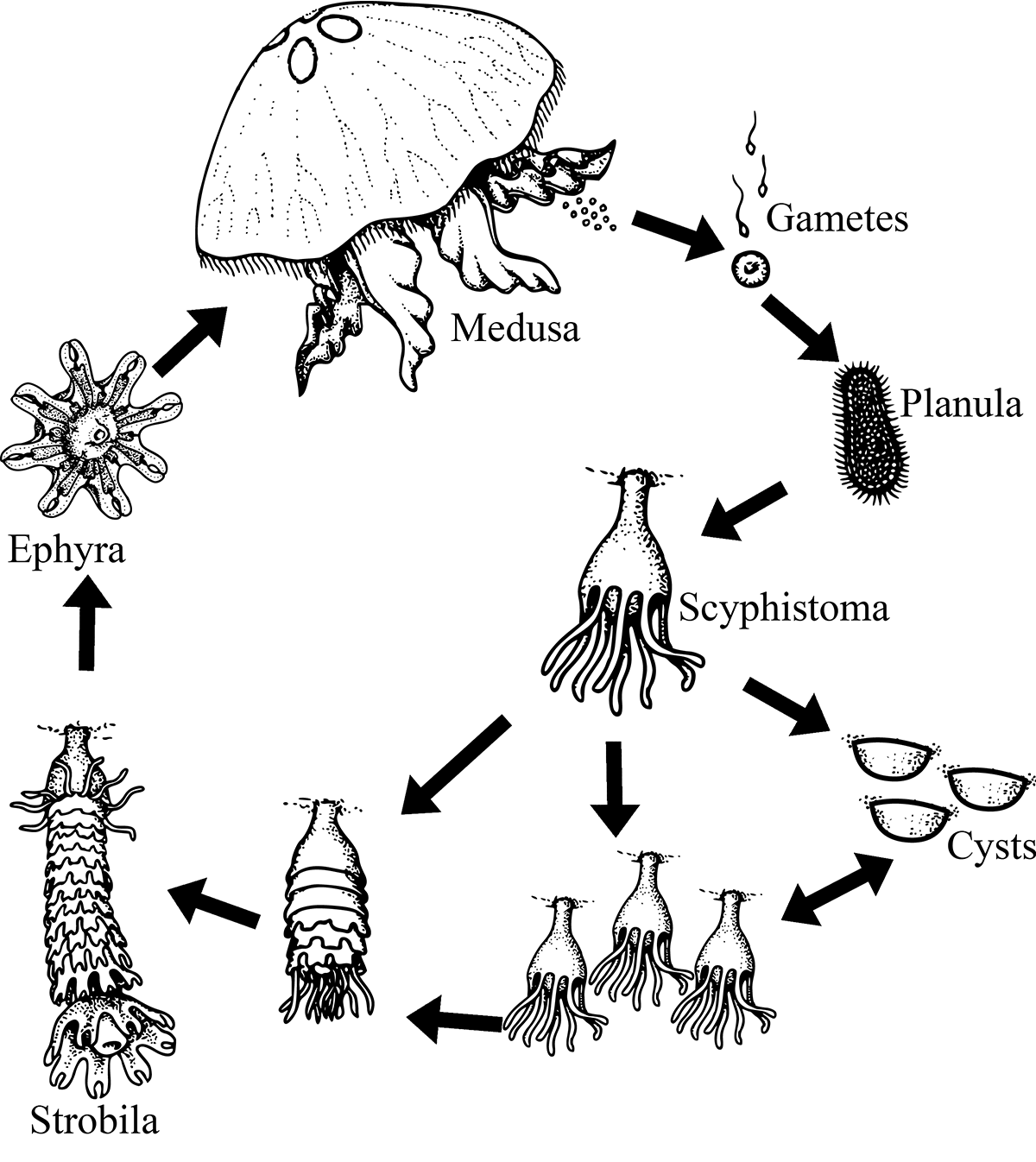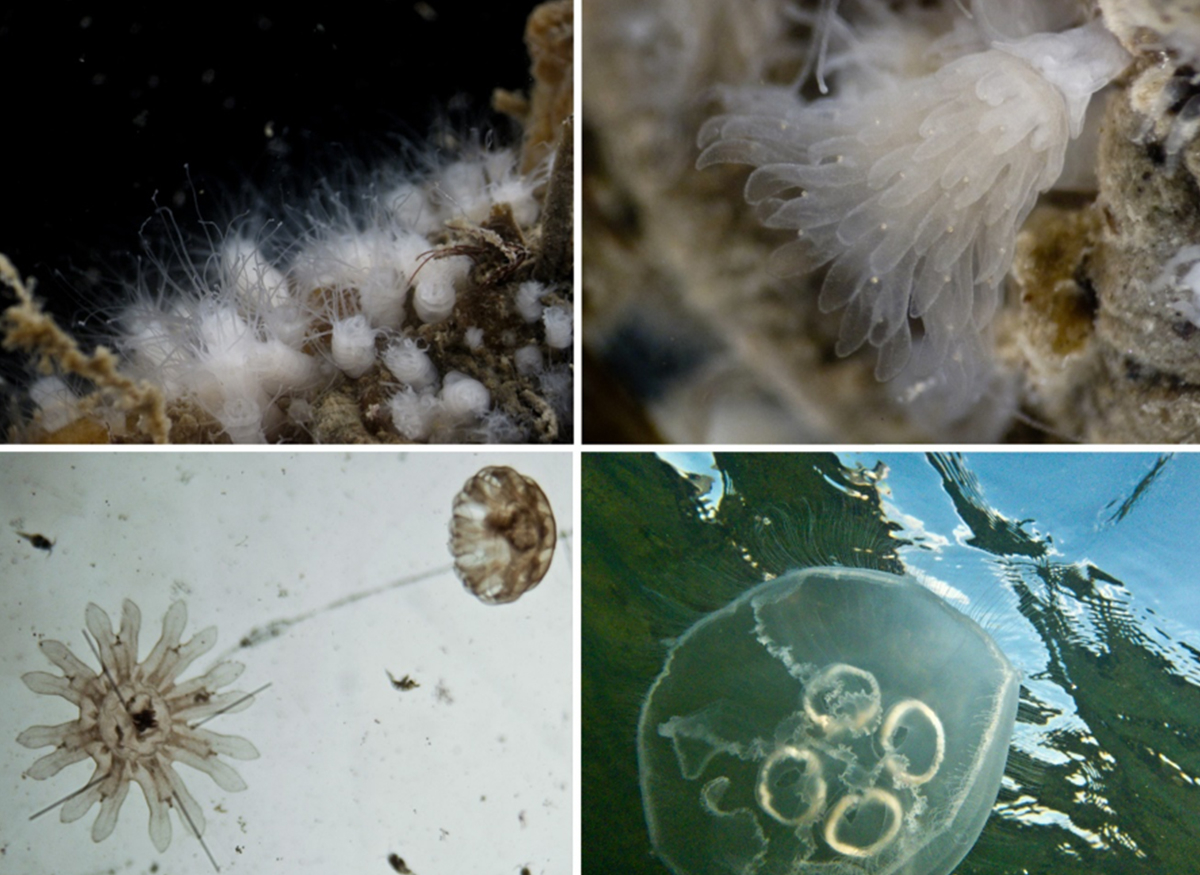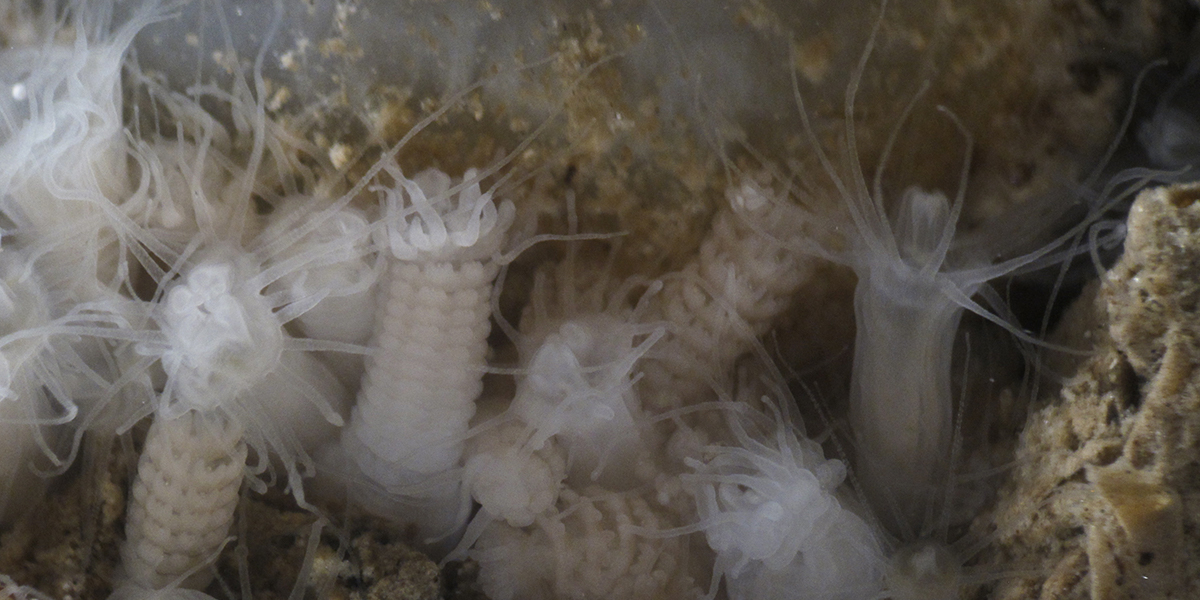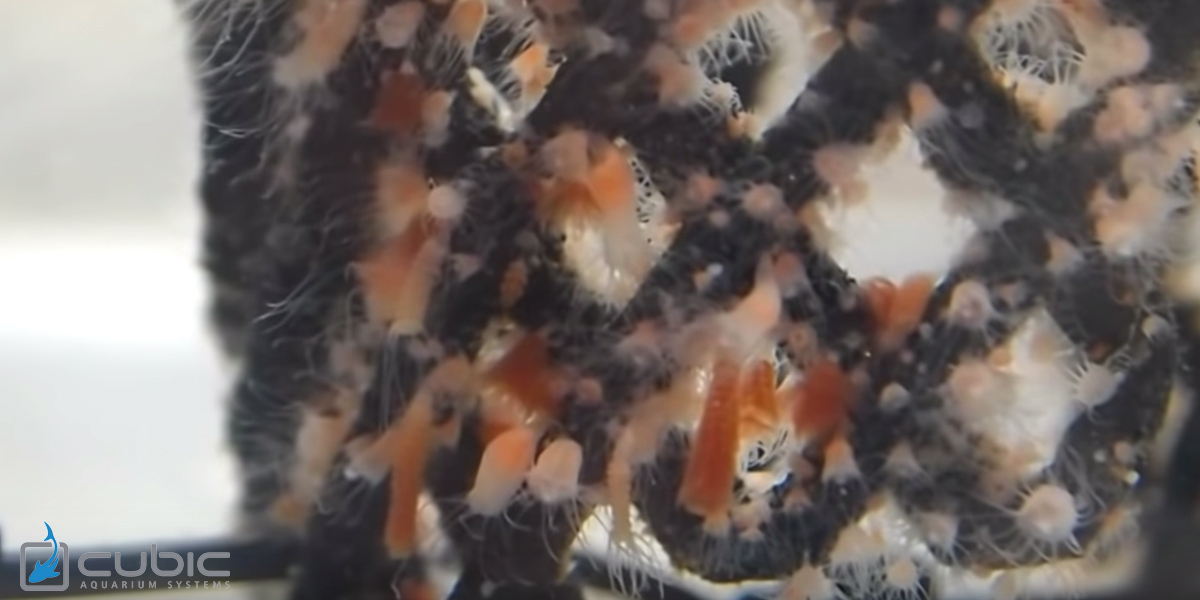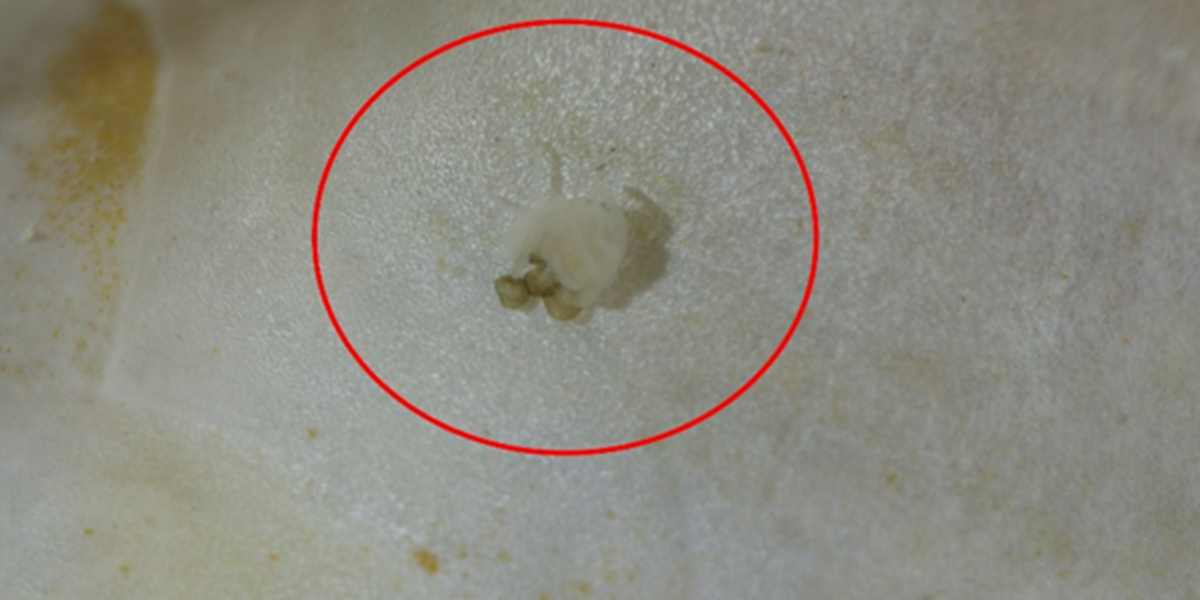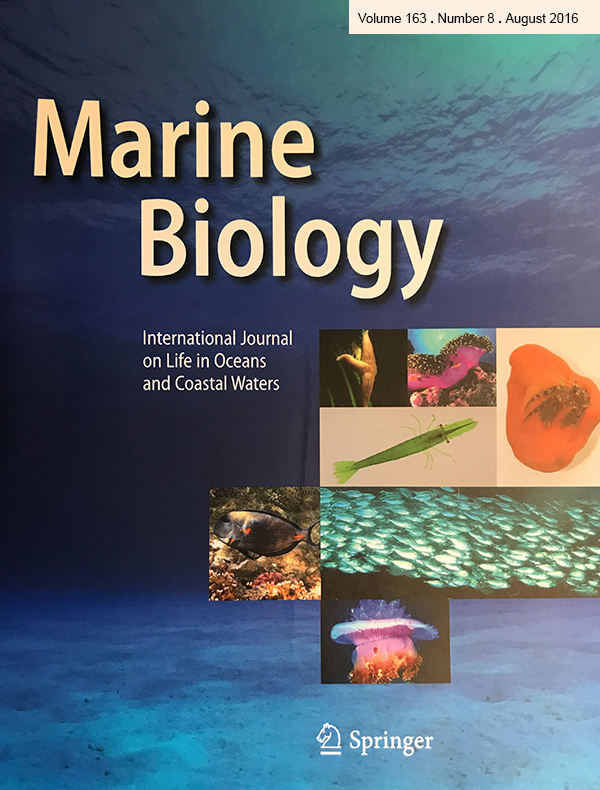Jellyfish polyps
When people hear the word jellyfish, they mostly think of the large, slimy, gelatinous medusae that wash up on beaches. The medusa stage is only a small part of the jellyfish life cycle. For most of their life, most jellyfish species are actually bottom-dwelling animals. They live as tiny polyps attached to hard surfaces such as stones, shells, wood, and man made structures of steel, concrete and plastic. Or so we think: for many species of jellyfish, these bottom-dwelling polyps have never been observed in the natural environment.
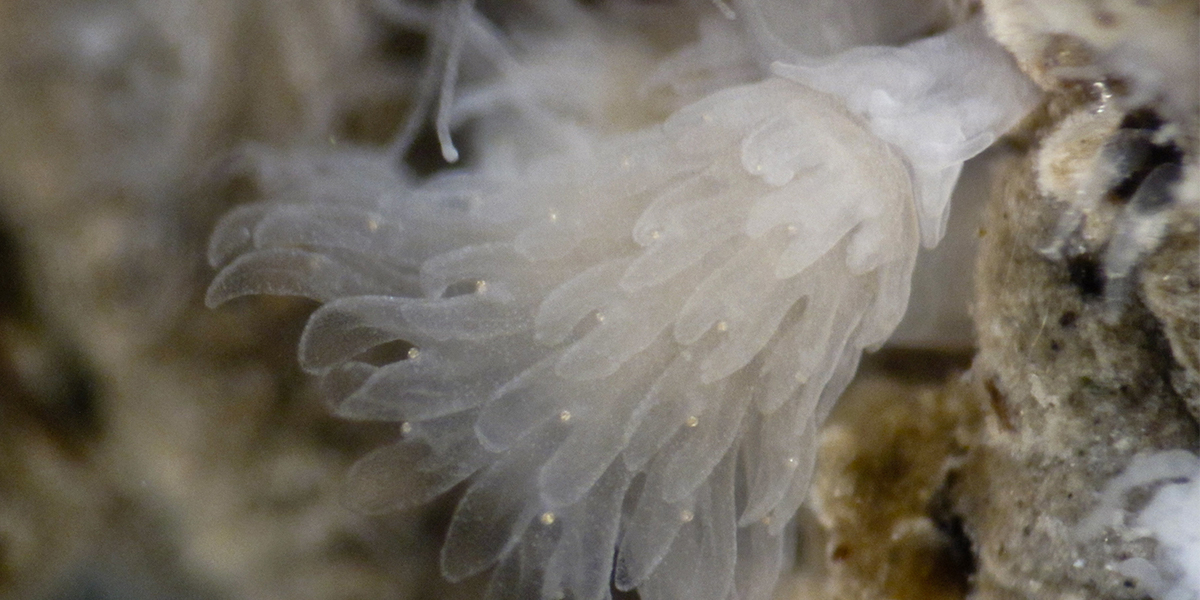
Life cycle
The moon jellyfish Aurelia aurita is one of the most common jellyfish species in Dutch coastal waters. Its polyps are well known and often spotted by scuba divers. The life cycle (see figure) of the moon jellyfish starts with the release of sperm by the males (they have separate sexes). Females ingest the sperm and use it to fertilize their eggs. The eggs are brooded in the jellyfish’s oral arms, until they hatch into a small slipper-shaped larva: the planula larva. Using cilia on its body, which are tiny moving hairs, the planula larva swims around looking for a suitable place to settle. This would preferably be somewhere dark, upside down, and with low currents such as the underside of a marina float. Once settled, the planula transforms into a polyp, which uses its tentacles to catch its food: tiny organisms and detritus floating in the water.
Here is where it gets complicated.
Jellyfish polyps can have several modes of asexual reproduction. They can:
• Bud off new polyps, which themselves can bud off new polyps as well;
• Develop cysts; survival stages with a tough chitinous case, that can last for months without food;
• Strobilate to release new baby jellyfish.
In the process of strobilate to release new baby jellyfish the upper part of the polyp transforms into
something that looks like a stack of cups. Each cup gradually metamorphoses into a baby jellyfish, an ephyra, which is then released. The ephyra grows into an adult jellyfish, spawns, and the cycle is complete. One polyp can produce a dozen or more juvenile jellyfish, called ephyra, which look like snowflakes.
Almost all exceptions to this general life cycle are possible as well, as Chinese scientists recently showed1. With this life cycle, one settled planula larva can produce numerous daughter polyps, all clones of each other, which can in turn produce many ephyra, making the polyp stage an important driver for the occurrence of jellyfish blooms.
Timing
Jellyfish polyps have to time the release of their ephyrae just right - if they release them just before the annual zooplankton spring bloom, there will be plenty of food available. The mechanism that triggers this release of ephyrae (called strobilation) has been a topic of interest for a long time. In the moon jellyfish, scientists discovered that strobilation is induced by proteins that are produced during seasonal temperature changes2. Interestingly, at NIOZ we found that moon jellyfish appeared earlier in the year in the catches of our fish fyke monitoring programme when winter temperatures were higher3.
Although the polyp stage is very important in determining where, when and how many jellyfish are present, it is surprising that most species of polyp have never been observed in the natural environment. The polyps have only been found for a handful of species, including the moon jellyfish. This is why in 2013, NIOZ started the search for jellyfish polyps in a range of locations in the North Sea area: harbours, marinas, shipwrecks, oil rigs and similar structures. We found polyps at a wide variety of sites, from Lake Grevelingen marinas to wrecks of steamers in the North Sea. However, unexpectedly, all polyps turned out to be those of moon jellyfish. This allowed us to study the population structure of moon jellyfish polyps, but the location of the polyps of other jellyfish species remained unknown4.
Searching for missing polyps
In 2018 we took to the North Sea again for another attempt to find the missing polyps. This time, we would search for them on any hard substrate brought up in hauls by the Deep Digging Dredge, which colleagues were using to investigate benthic fauna. This instrument scrapes off the top of the sediment, and anything on or in it is collected. Much to our surprise, the first few hauls of the dredge on the Dogger Bank already yielded some empty shells with epifauna on them, including some microscopic jellyfish polyps. This transpired to be the only place we would find them, but it was better than nothing. Back in the lab, we extracted DNA from the polyps, amplified it and obtained their genetic fingerprint in order to determine which species they belonged to. And at last, one of the pieces of the puzzle finally fell into place, as the polyps belonged to the compass jellyfish (Chrysaora hysoscella), which had never been observed in the field before!
Papers
1. He, J., Zheng, L., Zhang, W., Lin, Y., 2015. Life Cycle Reversal in Aurelia sp.1 (Cnidaria, Scyphozoa. PLOS ONE 10, e0145314
2. Fuchs, B., Wang, W., Graspeuntner, S., Li, Y., Insua, S., Herbst, E.-M., Dirksen, P., Böhm, A.-M., Hemmrich, G., Sommer, F., others, 2014. Regulation of polyp-to-jellyfish transition in Aurelia aurita. Curr. Biol. 24, 263-273
3. Van Walraven, L., Langenberg V. T., Dapper, R., Witte, J.IJ., Zuur, A.F., van der Veer H. W. 2015. Long-term patterns in 50 years of scyphomedusae catches in the western Dutch Wadden Sea in relation to climate change and eutrophication. Journal of Plankton Research 37, 151–1672014. 4
4.Where are the polyps? Molecular identification, distribution and population differentiation of Aurelia aurita van Walraven, L., Driessen, F., van Bleijswijk, J., Bol, A., Luttikhuizen, P. C., Coolen, J.W.P., Bos, O.G. Gittenberger, A., Schrieken, N., Langenberg, V. T., van der Veer, H. W. 2016. Marine Biology 163, 1–13
